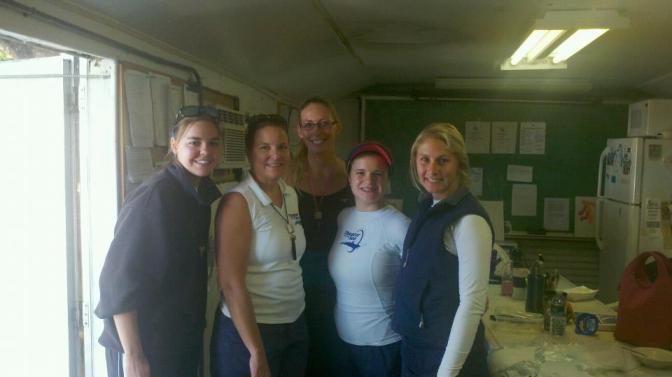Hey there everyone,
This is Jenna writing finally, after a while. I have been very busy lately due to online college work and my current internship at a Theater of the Sea in Islamorada, FL which has slowed me down a lot recently to the point where I no longer had anytime to blog about my experiences. So, now that my finals for the semester are out of the way, I can finally get to blog about how things have been going down here in the Florida Keys.
Theater of the Sea
I personally love my internship at Theater of the Sea. So, far, I have had the best five weeks of my life getting my foot in the animal training field through some hands-on experience with the dolphins, sea lions, and rays at the park. So far, I have done some water-work training sessions with the dolphins and a sea lion named Bella as well as a couple of feeding sessions here and there with the sting rays at stingray beach. In addition, I have been assisting a lot with getting music ready for the shows and picking out volunteers to meet the animals up-close in person. Some of these people have even asked me to picked them to meet the animals too like this one grandmother from France who came to the Keys with her young grandson because he wanted to see a dolphin. When she came up to me, I was so touched by her story how it was her grandson’s dream to meet a real dolphin that I had to pick him to meet one and so, after I fulfilled his wish, I picked him for a second time to toss rings to Wilbur the sea lion and believe me, he wowed the crowed by throwing the ring from a far distance. It felt so good granting some kid his life-long wish because this is the kind of stuff that most people may never get the chance to do and also, it was Christmas and I was taught for a long time that Christmas is not really about the presents you get under the Christmas tree, it’s more about caring for those who really want to be cared for.
Winter has Finally been Paired with Hope
With a lot of delight, I am very happy to day that Tampa Bay’s Bay News 9 has confirmed that Winter the dolphin has finally been paired with Hope almost one year after Clearwater Marine Aquarium’s youngest bottlenose dolphin was first moved to the Winter Zone from the Dolphin Zone where she had been residing since the winter of 2011. The CMA staff is reporting that Winter and Hope have been getting along very well and the introduction has been a huge success. Congrats to Winter and Hope and a very successful introduction.
Back to Life in the Keys….
Since my internship is a paid one, I have decided that I will be using all my current paychecks to pay to have my SCUBA lessons be done down here in Key Largo since I found out that it’s very expensive to get certified up north while it’s cheaper down here. Plus, I have always wanted to go scuba diving in Florida’s coral reefs and see the ship wrecks that are down there. This would mean I would have stay in the Keys long after my internship ends and that would also mean finding a job down here too so that I would be able to help pay for the condo my mother and I are renting at the Moon Bay condominiums in Key Largo. I am so glad that I’m spending the holidays in paradise because I don’t have to worry too much about the cold weather. Any way, I hope you all are having a great Christmas and a Happy New Year.
Merry Christmas everyone,
~Jenna~






















